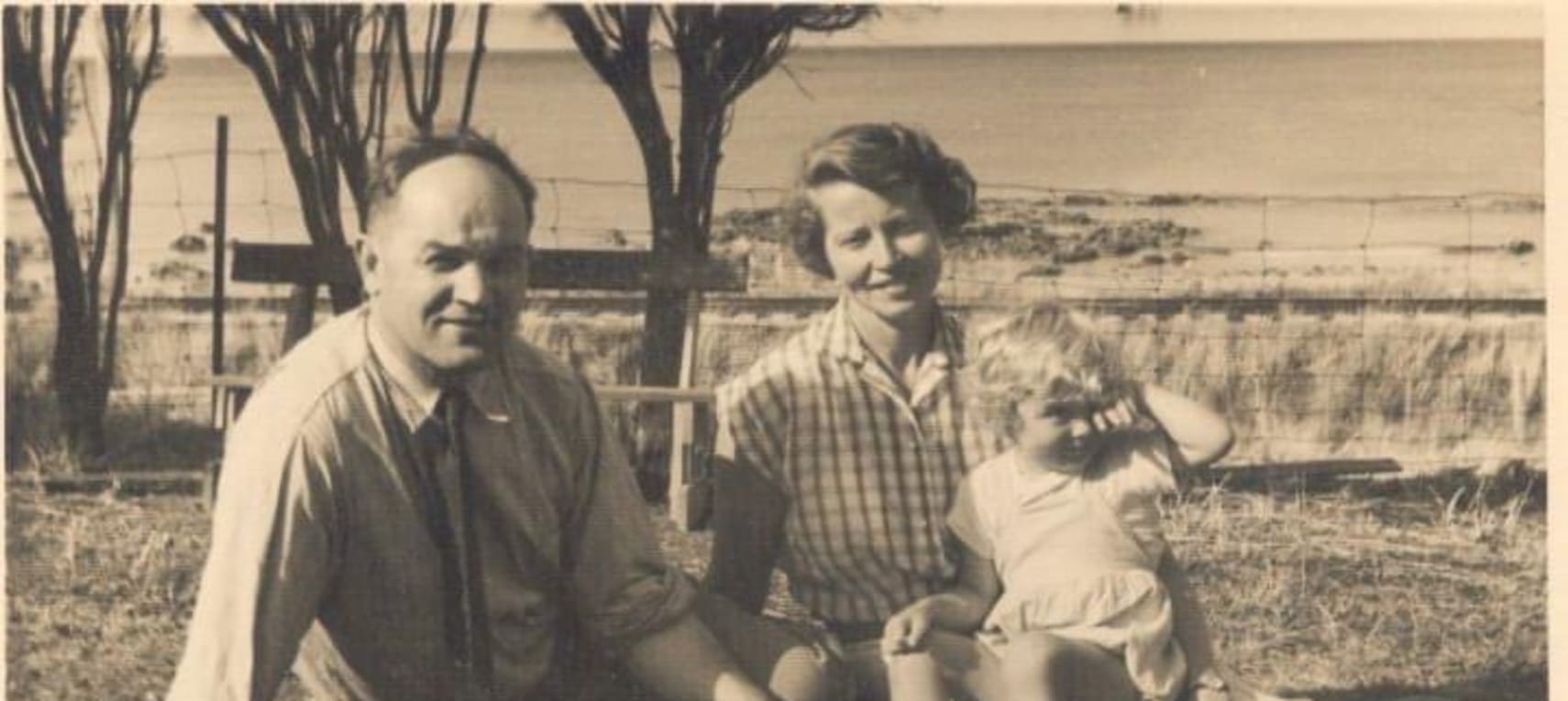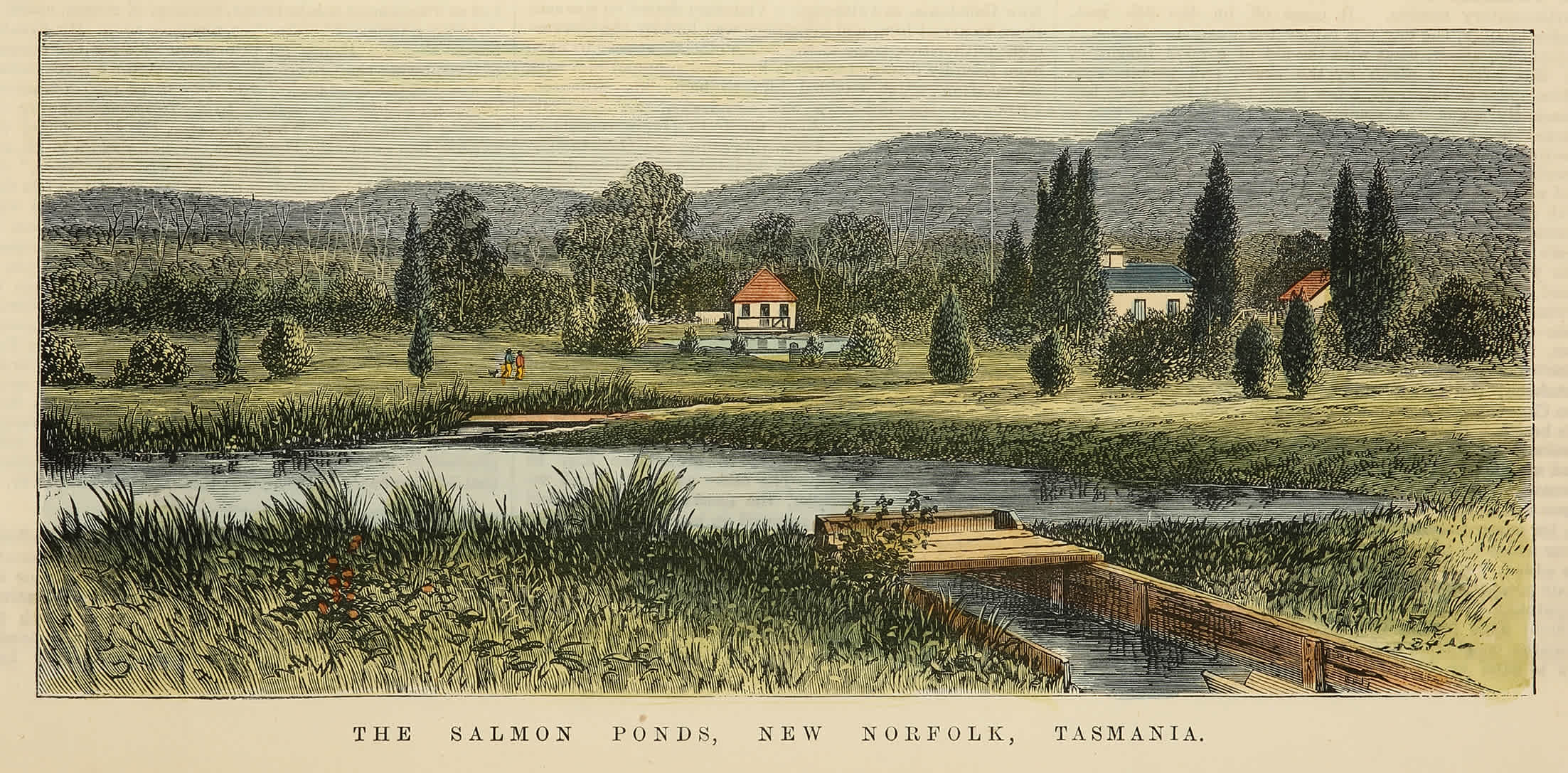“I was frightened when I came here first. I thought, I’m a foreigner and they won’t like me. But we’d been in the house only 10 minutes and someone came with some firewood. Then someone else came in with some milk. They all smiled and offered to help some more, and I knew I didn’t have anything to be frightened about.” ~ Dr Charles Matysek, Penguin, 1955
It is a long way from the landlocked Central European country of the Czech Republic (formerly Czechoslovakia) to the quiet Tasmanian coastal town of Penguin. And yet, for more than 30 years, the people of Penguin turned for their medical needs to three consecutive doctors whose life pathways had brought them from the old universities of Prague and Brno to the other side of the globe.
In March of 1955, The Herald newspaper in Melbourne ran three articles, by reporter AJ Spence, about the “alien doctor scheme”, whereby “Tasmania … found a sensible way to use migrant doctors, while some Australian states – especially Victoria – are still arguing about registering them”.
The articles refer to the scheme developed by the Tasmanian government to allow “migrant doctors” to sit for medical examinations and obtain local qualifications. The migrants were part of the great wave of displaced persons brought to Australia from Europe to help revitalise the economy and populate a country which was recovering from the traumas of the World War II. However, under Immigration Minister Arthur Calwell’s scheme, all men came as “labourers” and all women as “domestic help”, regardless of qualifications obtained in their homeland.
The first of The Herald articles, which appeared on March 2, 1955, outlined in the language of the 1950s what in today’s jargon we would call the “win-win” situation constructed by the then Tasmanian Minister for Health, Dr RJ Turnbull. The scarcity of medical officers willing to work in the “free Government health scheme” was no doubt the impetus, but there was more: “Apart from the practical business of getting doctors to make this service work, Dr Turnbull says he is shocked to think that scores of competent medical men in Australia are selling vacuum cleaners, doing pick-and-shovel work or doggedly remaining in the medical profession – even if only as medical orderlies, male nurse and theatre orderlies. And this at a time when the country needs doctors.”
The Herald reporter then contrasted the forward thinking Dr Turnbull with the reluctance of the Victorian bureaucracy to develop a scheme for assessing and screening and assisting medical officers to work for local qualifications.
In the second article, published one day later, Spence dramatically reconstructed a scene indicative of the Tasmanian scheme. “Two doctors faced each other across a desk in a Hobart office a few months ago – one an Australian, the other a German. ‘If we take you on here you can just forget for six years that you’ve ever been a surgeon,’ said the plain-speaking Australian. ‘I’ll be quite happy to,’ said the German – a former professor of surgery.”
The article, entitled “Two escape Reds to begin again at Launceston” gives an insight into the backgrounds of some of the doctors on the Tasmanian scheme. The German doctor (“we’ll call him Dr. X”, says the article) was working “with a Czechoslovakian colleague – “Dr Y”. Dr Y was Dr Dobroslav Svoboda, who was to be the second of the Czech doctors of Penguin. The article continued with a good summary of his background: “Dr Y graduated from Prague University in 1935 and escaped from Czechoslovakia after the Red coup. He came to Australia in 1948, knowing he could not be registered unless he went through a course he could not afford.
“He began with a pick and shovel but was finally helped by fellow Rotarians to get a job as a medical orderly in the Royal Melbourne Hospital. As an orderly, this doctor, who had been senior public health officer at Marienbad, was not able to extend his knowledge very much. He was denied access to the library.
“A few doctors, knowing his status, discussed cases with him from time to time, but mainly his tasks were menial. Only during a period as theatre orderly in Adelaide Hospital was he able to learn a little by observation.”
At the time of writing of The Herald article, Dobroslav Svoboda was completing one-year pre-registration training at Launceston General Hospital.
The third article by AJ Spence, headed “A ‘flying doctor’ finds friends”, moved to the story of “Dr Z”, “one of the most popular men in the district”. Dr Z was Dr Charles Matysek, the first of the Czech doctors of Penguin, who was resident there for two years. “He and his wife and son left Czechoslovakia when the Reds took over,” Spence wrote. “From West Germany, he could have gone to America or Venezuela to practice. He chose Australia. He thought he could practice here.

“He has something else no university can give – an abundance of energy, willingness to work 24 hours a day if necessary, and a great interest in the welfare of his fellow men. Dr Z talks just as he thinks, works and drives – fast.
“ ‘I was frightened when I came here first,’ he said. That was about 15 months ago. ‘I thought, I’m a foreigner and they won’t like me. But we’d been in the house only 10 minutes and someone came with some firewood. Then someone else came in with some milk. They all smiled and offered to help some more, and I know I didn’t have anything to be frightened about.’
“I found out that he flung himself into his district immediately. His green Holden spun over rough country roads, kicking up clouds of dust. He never walked, he ran. He bubbled with vitality: it was infectious and immediately cheering.
“He was dubbed ‘the Flying Doctor’. Within weeks he knew everybody and everybody knew him. His district covered hundreds of square miles.”
Thanks to these articles from the 1950s, embedded as they are in the yellowing pages of an old copy of The Herald, next to advertisements for the Myer Emporium, Gaunt’s Jewellers, Normans coat store, and the release of 33 homesites at Frankston with prices starting at £78, we have a glimpse of how it happened that these two Czech doctors came to Penguin.
I have turned to my own memories and friends to complete their stories.
Dr Matysek left Penguin after more than a year, and returned to Launceston, where he set up private practice, and then to Hobart in 1960 where he opened his private practice at "Belkirk", 79 Davey Street. In the late 1960s, he bought St Helens Private Hospital in Macquarie Street, Hobart, and developed it into a 100-bed surgical hospital which he managed for several years, before eventually selling it.
Concurrently, he developed a similar surgical-medical hospital in Sydney. Before he retired, he returned to Dover as a GP (where, in his early years in Tasmania, he had also spent time as a government medical officer). In his later years, he developed a residential estate near his home at Blackmans Bay.
Dr Svoboda, after finishing his year at the Launceston General, and then working as locum for the Government Health Service in smaller Tasmanian communities, including Queenstown, Ouse and King Island, finally settled with his wife and daughter in Penguin, where he was to stay until the end of 1970. He and his family moved to Hobart in January 1971, where he continued his medical career at the St John’s Park Hospital in New Town. After retirement from full time work in 1975, he worked as Medical Officer for the Clarence Council.
As Dr Svoboda prepared to leave Penguin in 1970, the Tasmanian Government was also preparing to wind up the Penguin municipal health scheme from June 1971. However, world history had again moved to provide the people of Penguin with their third Czech doctor.
In August 1968 the tanks and soldiers of the Warsaw Pact countries, led by the Soviet Union, invaded their ally, Czechoslovakia, to curtail the political movement known as the “Prague spring”. This liberalisation movement, under Alexander Dubcek, had sought to bring about reforms known popularly as “socialism with a human face”. After the invasion, the second major wave of 20th century Czech emigration began.
Many young Czech people with professional backgrounds came to Australia, to the welcome of both their older, settled compatriots and the Australian authorities, who were quick to set up structures to assist the arrival and settling of this group. The “migrant doctors” who arrived with this group did not have to endure the two years of manual labour, although they were still required to undergo English language, clinical and theoretical examinations.
Dr Antonin Zvatora arrived in Tasmania in 1968 and was posted to Penguin in 1970. His wife, dentist Dr Eva Zvatora, was appointed to the school dental service. The community was able to benefit with little delay from the expertise of these two professionals.
Dr Zvatora was the longest serving of the three Czech doctors, as he remained in Penguin long after the Government health scheme was disbanded. Together with another migrant doctor, Dr Ismail, he set up private practice. He retired in 1988 and died in 1995. He is buried at Central Coast Memorial Park, Ulverstone.
Dr Svoboda died in September 2000 and is buried in Melbourne, the city in which he started off his life in Australia. Dr Matysek died in Hobart in January 2003. All three were held in the highest regard by the community and have left behind many memories. Their legacy is one of humanity and deep bonds, at a very personal level, between a small country in the heart of Europe and a small town on the coast of Tasmania.

Author’s note: This article originated with the thought one day many years ago how unusual – and worthy of documentation – it was that a small town in north-west Tasmania should have not one, not two, but three Czech GPs in a row over several decades. My father, Dr Dobroslav Svoboda, was the second of the three doctors. I was also intrigued by the old newspapers in my possession. So I wrote the article in 2013, wondered what to do with it, then adapted it to the idea of a commemorative plaque. My home town of Penguin has a very active and friendly History Group, who assisted me to gain the support of the Central Coast Council. The plaque was eventually unveiled in 2016, with a representative of the Czech Embassy in attendance, the Honorary Czech Consul in Tasmania, as well as the Mayor of Central Coast Council, members of the Czech community in Tasmania and many Penguin residents. My speech on this occasion contained some of the details that are in this article.
Dana Tymms was born in Adelaide to Czech refugee parents. As part of the retraining scheme for migrant doctors, her family moved to Tasmania when she was a child, and she grew up in Penguin and Hobart. After studying at the University of Tasmania and overseas, she followed a career, teaching German and French in three Australian states. Now semi-retired and living in Melbourne, she says she is still Tasmanian at heart.








